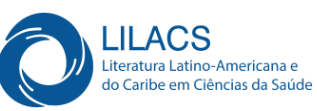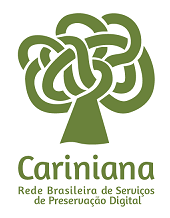Scale for Assessment of Giftedness - teacher's version: evidence of validity content
DOI:
https://doi.org/10.5433/2236-6407.2016v7n1p103Keywords:
test validity, special education, psychological assessment, kappa coefficientAbstract
The assessment of high abilities is of great importance in psychology, despite scarce studies in literature. Therefore, the aim of this study was to verify, through content validity, the appropriateness of the items of the High Assessment Scale Skills - Teacher Version. The judges were six post-graduate students in the psychological assessment area who rated the 41 items of the instrument in six factors (academic intellectual ability, specific academic skills, leadership, creativity, artistic talent). The results demonstrated the suitability of the items, most of them with concordance rates above 80% (n = 29) and between 60 and 80% (n = 8). Only four items showed agreement at or below 50%, suggesting the need for reformulation. The analysis of the Kappa coefficients showed indices between 0.69 and 0.81. In general, the results indicated the suitability of the scale to the contents of the pretended model.Downloads
References
Azevedo, S. M. L., & Mettrau, M. B. (2010). Altas habilidades/superdotação: mitos e dilemas docentes na indicação para o atendimento. Psicologia Ciência e Profissão, 30(1), 32-45. Disponível em: http://pepsic.bvsalud.org/scielo.php?script=sci_arttext&pid=S1414- 98932010000100004&lng=pt&tlng=pt
Bock, K.M.B, & Ruyter, D.J. (2011). Five values of giftedness. Roeper Review, 33, 198-207. Disponível em http://eric.ed.gov/?id=EJ929318.
Bracken, B. A., & Brown, E. F. (2006). Behavioral identification and assessment of gifted and talented students. Journal of Psychological Assessment, 24(2), 112-122. doi: 10.1177/0734282905285246.
Brasil. (2010). Secretaria de Educação Especial - MEC. Políticas Públicas para Alta Habilidade/ Superdotação. Disponível em: http://www.senado.gov.br/comissoes/CE/AP/AP20080626_superdotados_Cl áudia
Griboski.pdf. Carman, C. A. (2013). Comparing apples and oranges: fifteen years of definitions of giftedness in research. Journal of Advanced Academics, 24(1), 52-70. doi: 10.1177/1932202X12472602.
Chagas, J. F. (2007). Conceituação e fatores individuais, familiares e culturais relacionados à altas habilidades. In D. S. Fleith & E. M. L. S. Alencar (Eds.), Desenvolvimento de talentos e altas habilidades: Orientação a pais e professores (pp. 15-24). Porto Alegre: Artmed.
Cohen, L. M., Ambrose, D., & Powell, W. N. (2000). Conceptual foundations and theoretical lenses for the diversity of giftedness and talent. In K. A. Heller, F.J. Mönks, R. Subotnik, & R. J. Sternberg (Eds.), International handbook of research and development of giftedness and talent (pp.331-344). Oxford, England: Pergamon.
Conselho Federal de Psicologia (2003). Resolução 02/2003. Disponível em www.pol.org.br.
Dai, D. Y., Swanson, A., & Cheng, H. (2011). State of research on giftedness and gifted education: a survey of empirical studies published during 1998-2010 (April). Gifted Child Quarterly, 55(2), 126-138. doi: 10.1177/0016986210397831.
Elliott, S. N., & Argulewicz, E. N. (1983). Use of a behavior rating scale to aid in the identification of developmentally and culturally different gifted children. Journal of Psychoeducational Assessment, 1, 179-186. doi: 10.1177/073428298300100209.
Feldman, D. H. (2000). The development of creativity. In R.J. Sternberg (Ed.), Handbook of creativity (pp. 169-189). Cambridge: Cambridge University Press.
Fleiss, J. L. (1981). The measurement of interater agreement. In J.L. Fleiss (Org.), Statistical methods for rates and proportions. 2. ed. (pp. 212-236). New York: John Wiley & Sons Inc.
Gagné, F. (2005). From gifted to talents: the DMGT as a developmental model. In R. J. Sternberg & J. E. Davidson (Eds.), Conceptions of Giftdeness. 2 ed. (pp. 98-120). New York: Cambridge University Press.
Gardner, H. (1983). Frames of mind. New York: Basic Books. Gardner, H. (1995). Inteligências múltiplas: a teoria na prática. Porto Alegre: Artmed.
Guenther, Z. C. (2000). Desenvolver capacidade e talentos: um conceito de inclusão. Petrópolis: Vozes.
Guenther, Z. C. (2012). Quem são os alunos dotados? Reconhecer dotação e talento na escola. In L. C. Moreira & T. Stoltz (Eds.), Altas Habilidades/Superdotação Talento, Dotação e Educação (pp. 63-83). Curitiba: Juruá.
Guimarães, T. G. & Ourofino, V. T. A. T. (2007). Estratégias de identificação do Aluno com Altas Habilidades/Superdotação. In D. S. Fleith (Ed.), A construção de práticas educacionais para alunos com altas habilidades/superdotação: orientação a professores (pp. 53-65). Brasília: Ministério da Educação, Secretaria de Educação Especial.
Heller, K. A. (2013). Findings from Munich longitudinal study of giftedness and their impact on identification, gifted education and counseling. Talent Development & Excellence, 5(1), 51-64. Disponível em: http://connection.ebscohost.com/c/articles/90616009/findings-frommunich-longitudinal-study-giftedness-their-impact-identification-giftededucation-counseling.
Jarosewich, T., Pfeiffer, S. I., & Morris, J. (2002). Identifying gifted students using teacher rating scales: A review of existing instruments. Journal of Psychoeducational Assessment, 20, 322-336, doi: 10.1177/073428290202000401.
Kaufman, S. B., & Sternberg, R. J. (2008). Conceptions of giftedness. In S. Pfeiffer (Ed.), Handbook of giftedness in children: Psycho-Educational theory, research and best practices (pp. 71-91). New York: Springer.
Lamounier, R., & Villemor-Amaral, A. E. (2006). Evidencias de validez para el Rorschach en el contexto de la psicología de tránsito. Interamerican Journal of Psychology, 40 (2), 167-176. Disponível em: http://www.redalyc.org/articulo.oa?id=28440204.
Landis, J. R., & Koch, G. G. (1977). The measurement of observer agreement for categorical data. Biometrics, 33, 159-74. doi: 10.2307/2529310.
Lee, D., & Pfeiffer, S. I. (2006). The reliability and validity of a korean-translated version of the Gifted Rating Scales. Journal of Psychoeducational Assessment, 24, 210-224. doi: 10.1177/0734282906287829.
Li, H., Lee, D., Pfeiffer, S. I., Kamata, A., Kumtepe, A. T., & Rosado, J. (2009). Measurement invariance of the Gifted Rating Scales - school form across five cultural groups. School Psychology Quaterly, 4(3), 186-198. Disponível em: http://www.academia.edu/2333726/Measurement_Invariance_of_the_Gifte d_Rating_Scales_School_Form_Across_Five_Cultural_Groups.
Li, H., Lee, D., Pfeiffer, S. I., & Petscher, Y. (2008). Parent Ratings Using the Chinese Version of the Parent Gifted Rating Scales School Form Reliability and Validity for Chinese Students. Educational and Psychological Measurement, 68, 659-675. doi: 10.1177/0013164407313365.
Lubart, T. ( 2007). Psicologia da Criatividade. Porto Alegre, Artmed. Margulies, A. S., & Floyd, R. G. (2004). Book review: Gifted Rating Scales (GRS). Journal of Psychoeducational Assessment, 22, 275-282. doi: 10.1177/073428290402200306.
Mendes, E. G., Nunes, L. R. O. P., & Ferreira, J. R. (2002). Diagnóstico e caracterização de indivíduos com necessidades educacionais especiais: produção cientifica nacional entre 1981 e 1998. Temas em Psicologia, 10(1), 11-25. Disponível em: http://pepsic.bvsalud.org/scielo.php?script=sci_arttext&pid=S1413- 389X2002000100002&lng=pt&nrm=iso.
Miller, E. M. & Cohen, L. M. (2012). Engendering talent in others: expanding domains of giftedness and creativity. Roeper Review, 34, 104-113. Disponível em: http://eric.ed.gov/?id=EJ960267.
Miura, C. T. P., Gallani, M. C. B. J., Domingues, G. B. L., Rodrigues, R. C. M., & Stoller, J. K. (2010). Adaptação cultural e análise da confiabilidade do instrumento Modified Dyspnea Índex para a cultura brasileira. Revista Latino-Americana de Enfermagem, 18 (5), 1-11. doi: 10.1590/S0104- 11692010000500025.
Negrini, T., & Freitas, S. N. (2008). A identificação e a inclusão de alunos com características de altas habilidades/superdotação: discussões pertinentes. Revista Educação Especial (Santa Maria), 32, 273-284. doi: 10.5902/1984686X.
Perroca, M. G., & Gaidzinski, R. R. (2003). Avaliando a confiabilidade interavaliadores de um instrumento para classificação de pacientes: coeficiente Kappa. Revista Escola de Enfermagem USP, 37 (1), 72-80. doi: 10.1590/S0080-62342003000100009.
Petscher, Y., & Li, H. (2008). Measurement Invariance of the Chinese Gifted Rating Scales: Teacher and parent forms. Journal of Psychoeducational Assessment, 26, 274-286. doi: 10.1177/0734282907303873.
Pfeiffer, S., & Blei, S. (2008). Gifted identification beyond the IQ test: rating scales and other assessment procedures. In S. Pfeiffer (Ed.), Handbook of giftedness in children: Psychoeducational theory, research and best practices (pp. 177-198). New York: Springer.
Pfeiffer, S., & Jarosewich, T. (2003). Gifted Rating Scales - Manual. San Antonio/TX: Pearson.
Pocinho, M. (2009). Superdotação: conceitos e modelos de diagnóstico e intervenção psicoeducativa. Revista Brasileira de Educação Especial, 15(1), 3-14. doi : 10.1590/S1413-65382009000100002.
Renzulli, J. S. (2004). O que é esta coisa chamada superdotação, e como a desenvolvemos? uma retrospectiva de vinte e cinco anos. Revista Educação, 27(1), 1-21. Disponível em: http://revistaseletronicas.pucrs.br/ojs/index.php/faced/article/view/375.
Renzulli, J. S. (2008). La educación del sobredotado y el desarrollo del talento para todos. Revista de Psicologia (Lima), 26(1), 25-44. Disponível em: http://revistas.pucp.edu.pe/index.php/psicologia/article/view/1120.
Renzulli, J. S. (2011). What makes giftedness? Reexamining a definition. Kappan, 92(8), 81-88. doi: 10.1177/003172171109200821. Ribeiro, W.J., & Nakano, T.C. (2013). Altas habilidades / superdotação: produção científica brasileira. Manuscrito não publicado.
Robinson, A., & Clinkenbeard, P. R. (2008). History of giftedness: Perspectives from the past presage modern scholarship. In S. Pfeiffer (Ed.), Handbook of giftedness in children: Psycho-Educational theory, research and best practices (pp. 13-31). New York: Springer.
Siu, A. F. Y. (2009). The reliability and validity of a Chinese-translated version of the Gifted Rating Scales-Preschool/Kindergarten Form. Journal of Psychoeducational Assessment, 20(10), 2-10. doi: 10.1177/0016986208315802.
Sternberg, R. J. (2005) The WICS model of giftdness. In R. J. Sternberg & J. E. Davidson (Eds.). Conceptions of Giftdeness (pp. 243-327). New York: Cambridge University Press.
Viana, H. B., & Madruga, V. A. (2008). Diretrizes para adaptação cultural de escalas psicométricas. Revista Digital - Buenos Aires, 12(116). Disponível em: http://www.efdeportes.com/efd116/adaptacao-cultural-de-escalaspsicometricas.htm.
Villemor-Amaral, A. E., & Xavier, M. F. (2007). Avaliação da relação com a figura materna no CAT-A. Psic: revista da Vetor Editora, 8(2), 195-203. Disponível em: http://pepsic.bvsalud.org/scielo.php?script=sci_arttext&pid=S1676- 73142007000200010&lng=pt&tlng=pt.
Virgolim, A. M. R. (2007). Altas habilidades/superdotação: encorajando potenciais. Brasília: Ministério da Educação, Secretaria de Educação Especial.
Wechsler, S.M. (2008). Criatividade: descobrindo e encorajando. Campinas: Lamp / Impressão Digital do Brasil.
Ziegler, A., Stoeger, H., & Vialle, W. (2012). Gifteness and gifted education: the need for a paradigm change. Gifted Child Quarterly, 56, 194-197. doi: 10.1177/0016986212456070
Downloads
Published
How to Cite
Issue
Section
License
Copyright (c) 2016 Estudos Interdisciplinares em Psicologia

This work is licensed under a Creative Commons Attribution 4.0 International License.
The Copyright of the published manuscripts belongs to the Journal. Since they are published in an open access Journal, they are freely available, for private use or for use for educational and non-commercial purposes.
The Journal has the right to make, in the original document, changes regarding linguistic norms, orthography, and grammar, with the purpose of ensuring the standard norms of the language and the credibility of the Journal. It will, however, respect the writing style of the authors.
When necessary, conceptual changes, corrections, or suggestions will be forwarded to the authors. In such cases, the manuscript shall be subjected to a new evaluation after revision.
Responsibility for the opinions expressed in the manuscripts lies entirely with the authors.



















